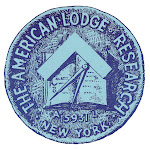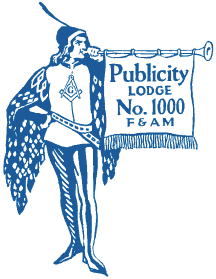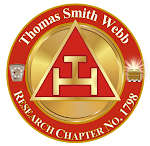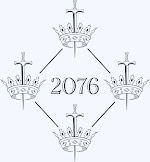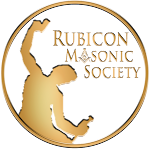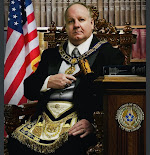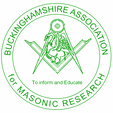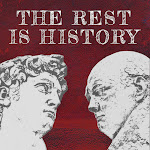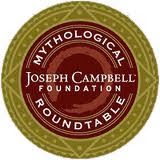Thirty-two years ago, the Magpie Mason was the Magpie Elementary School Student, and I was lucky to have gone on a class trip to New York City to view treasures discovered in 1922 inside the tomb of King Tutankhamun. The exhibit left a big impression in my mind, and for many years I re-read the catalogue sold by the Metropolitan Museum of Art, trying to discern what message, if any, from a 3,300-year-old pharaoh might be of value today. I still do not know the answer to that, but Freemasonry has taught me, if nothing else, to observe symbols. So the iconic image of this pharaoh’s coffin, with enigmatic crook and flail, gained a new meaning for me as a Freemason.


Left: The Canopic Coffin of Tutankhamun was one of four miniature coffins that contained the young pharaoh’s internal organs – his heart and vitals, if you will. Tutankhamun, who died at age 18, ruled during the 18th Dynasty of the New Kingdom. Right: The 18° of the AASR is signified by a posture noticeably similar to the coffin’s design. (Watercolor of Knight Rose Croix courtesy of Ancient and Accepted Scottish Rite, Southern Jurisdiction.)
Last July, it was W. Bro. Tim Hogan of Enlightenment Lodge No. 198 in Colorado who showed me the connection. In a thread in the discussion forum of The Masonic Society, he explained how a sign used in the Ancient and Accepted Scottish Rite very closely resembles the placement of hands shown in depictions of pharaohs, like the bejeweled, golden likenesses of King Tutankhamun.
The crook and flail are explained by Dr. I.E.S. Edwards (1909-96), former keeper of Egyptian Antiquities at the British Museum, who authored the catalogue Treasures of Tutankhamun (1976) that documented the Tutankhamun artifacts, the historic tour of which was organized by the Metropolitan Museum of Art. He writes:
“Although the crook and the flail were most often represented as emblems of the god Osiris, they were also carried on some ceremonial occasions, besides the coronation, by the reigning pharaoh. Very occasionally the crook was held by viceroys of Nubia and also by viziers. A painted scene of tribute from Asia in the tomb of Tutankhamun’s viceroy of Nubia, Huy, shows the king holding both the crook and flail in his left hand and the sign for ‘life’ (ankh) in his right, while the viceroy holds a crook, but no flail, in his left hand and a single ostrich plume in his right. Only rarely is the flail shown in the hands of priests or officials and such instances are limited to scenes of royal jubilee festivals. Notwithstanding these sporadic exceptions, the crook and the flail were essentially Osirian emblems, though possibly not so in origin. Osiris is believed to have acquired them from Andjeti, the local god of a town in the Delta named Djedu, who was represented in human form with two feathers on his head and holding the crook and flail in his hands. At a very early date in Egyptian history Osiris absorbed Andjeti and adopted his insignia. Osiris, however, was regarded not only as a god, but also as a deified deceased king and consequently his insignia, particularly the crook and flail, were treated as symbols of royalty.
It is not difficult to imagine how a shepherd’s crook could have acquired the symbolical significance of rulership. Its name in Egyptian is heqat and the most common word for ‘ruler’ is heqa. Not unnaturally it has been compared with the crosier, the Christian pastoral staff. A flail (called nekhakha), however, seems out of character for a kindly and beneficent god like Osiris, and for this reason some authorities prefer to regard it as a ladanisterion, a flail-like instrument used until the present day by shepherds in the Mediterranean region and elsewhere for collecting ladanum, a gummy substance excreted from the leaves of the cistus plant. According to classical writers, it was used in the preparation of incense and unguents. This suggestion, proposed by the late Professor P.E. Newberry who helped in the clearance of Tutankhamun’s tomb, is plausible, but, as yet, there is no clear evidence that the cistus plant grew in Egypt in pharaonic times.”
For its part, the ritual motion affected during the 18° also has significance from symbolic shepherding in antiquity. It is defined in Isaiah: “He shall feed his flock like a shepherd: He shall gather the lambs with his arm, and carry them in his bosom.” (40:11, King James Version).
Anyway, I point this out now because Tutankhamun’s treasures will return to New York in April for a 36-week exhibition at Discovery Times Square Exposition. I plan to visit, and I recommend it to you too. In fact, discounts on tickets are available to groups, so organize your Chapter of Rose Croix and get over there. Tickets go on sale next month. The exhibit will close January 2, 2011.
 |
| Hanging in the Hall of Scottish Rite Regalia inside the House of the Temple in Washington are 36 oil paintings by Robert H. White, 32°. Shown here is 18th Degree: Knight of Rose Croix which depicts the apron, collar, and jewel of the degree. Read about its symbology here. |






